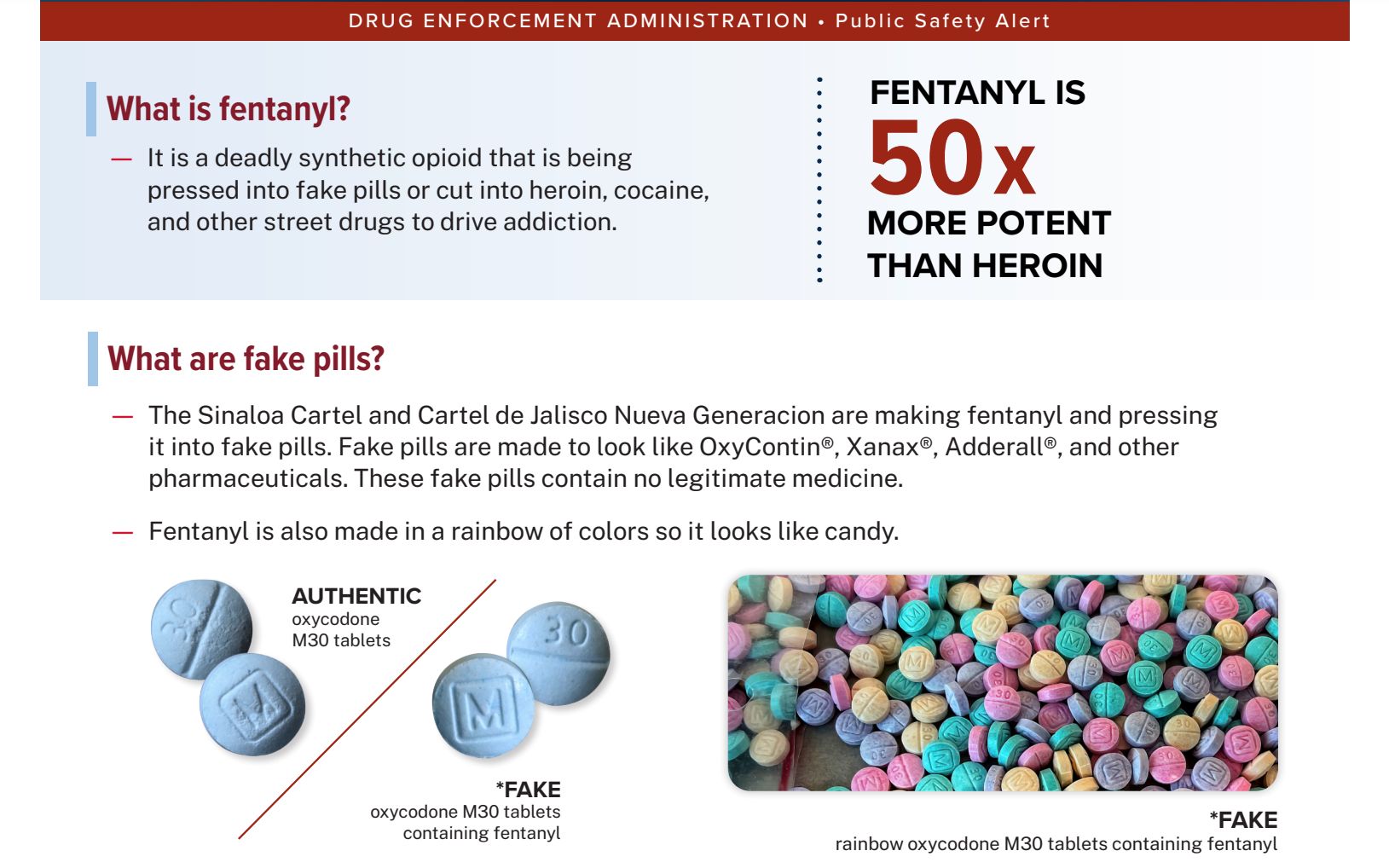Fentanyl Crisis
Gallery

Last month, WWJ news radio reported that 3.2 kilos of fentanyl was seized in metro Detroit by Michigan State Police during a raid of what it called “a sophisticated drug trafficking organization with ties to Macomb County.”
According to a recent press release from The Centers for Disease Control and Prevention’s (CDC) National Center for Health Statistics, the newest data available shows that nearly 107,000 people died of drug overdoses in 2021, which equals approximately one death every five minutes. This represents a five-fold increase over the past 20 years.
The majority of these deaths are caused by the unknown presence of fentanyl in illicit drugs.
People buying a drug on the street think they are getting something like heroin, cocaine, or even a prescription pill like Xanax, OxyContin, Percocet, or Adderall very convincingly made to look like the real thing, but way too often they in fact are ingesting a homemade concoction laced with a lethal dose of fentanyl. Fentanyl-related overdose is now the number one cause of death for people 18 to 45 years old in America.
Fentanyl is uniquely dangerous due to its shocking potency. A comparable drug, like morphine, when used in a medical setting is usually prescribed at a dose of a few milligrams. Fentanyl by comparison is appropriate at a dose of a few dozen micrograms. This drug is fifty times stronger than heroin and one hundred times stronger than morphine.
Fentanyl is an odorless synthetic narcotic in the opioid family, similar to morphine or heroin, derived from (or made in a lab to mimic) opium found naturally occurring in the poppy plant. This sedating analgesic binds to receptors in the brain that control a person’s sense of pain and offers relief.
When a person takes too large of a dose the drug depresses the respiratory system too much and they stop breathing. The CDC’s Stop Overdose page advises people to watch for the signs of overdose, including small, constricted pupils, losing consciousness, slow, weak, or no breathing, choking or gurgling sounds, a limp body, and cold, clammy, or discolored skin.
Fentanyl is not new. The drug was first synthesized in 1959 and became approved for medical use as a powerful and effective sedative painkiller in the United States in 1968. Fast forward to the late 2010s and fentanyl was being bought and sold illegally on internet black markets. At that time, it was mostly coming from China, and most seizures were interceptions by inspectors at FedEx or the U.S. Postal Service.
Now the main source is from Mexican cartels, and they have ramped up production to a whole new level. Back in 2018, there were 290,000 pills containing fentanyl confiscated by law enforcement nationwide. Those numbers increased in 2019 to 1.5 million. Law enforcement seized more than 4 million pills in 2020 and that number increased again in 2021 to nearly 10 million. Last month, the U.S. Drug Enforcement Administration announced over 50 million pills containing fentanyl and more than 10,000 pounds in powder form seized in 2022 alone. This amount is an estimated 379 million potentially lethal doses, enough to kill every single American.
In response, DEA Special Agent Brian Besser was quoted as saying, “For the first time in my 31-year law enforcement career, we are seeing an oversaturated drug market. Anyone, including our kids, can buy dangerous and deadly drugs at the click of a button. This is like nothing we’ve experienced before and it makes our jobs as narcotics officers far more challenging and critical than ever before.”
In the event of an overdose the CDC recommends you call 911 immediately, and administer Naloxone, if it’s available. Naloxone is a powerful medicine sold under the brand name Narcan that can reverse an opioid overdose. Narcan is often carried by EMS, police, and firefighters but has become available over the counter without a prescription in most states due in large part to the extent of the opioid crisis. The CDC also recommends trying to keep the person awake and breathing, lying them on their side to prevent choking on vomit, and stay with the person until assistance arrives.
The DEA recently published a public safety alert called “What Every Parent and Caregiver Needs to Know About Fake Pills” which advises parents that the drug landscape has dramatically changed over the past few years, and that this extremely dangerous substance is finding its way into the hands of kids as young as middle school.
Illicit drug sales are often going undetected through social media and other private messaging apps, and so talking openly and honestly is vitally important. The suggestion is to have informed conversations with your children about what fentanyl is, and why it is so dangerous.
Friends should feel empowered to remind their peers that fentanyl has been found in most illegal drugs at this point and that any pill not directly from a doctor is a gamble on their life. For more information visit dea.gov/onepill.
